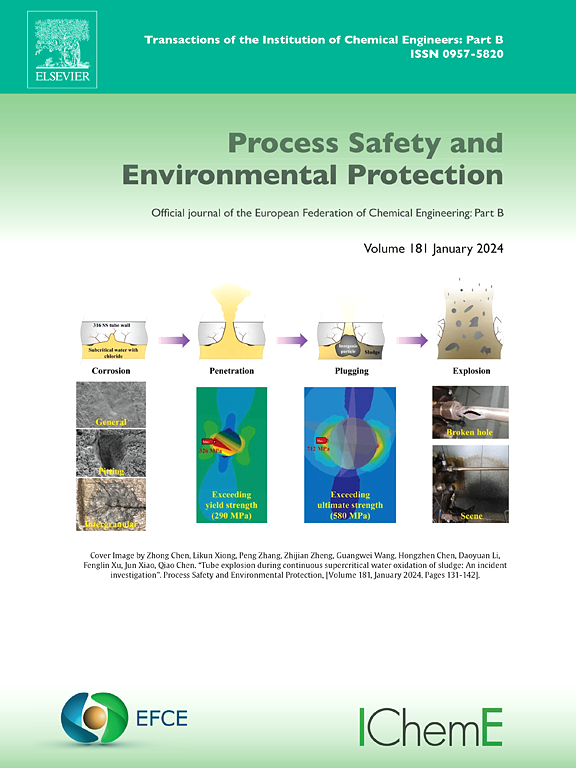Two-stage versus single-stage anaerobic co-digestion on methane synthesis: Energy prospects and microbial community
IF 6.9
2区 环境科学与生态学
Q1 ENGINEERING, CHEMICAL
引用次数: 0
Abstract
Cassava processing wastewater (CW), a byproduct generated during cassava processing activities, and glycerol (Gly), a byproduct of biodiesel production processes, have a high concentration of organic matter and digestibility, which provides them with great potential for hydrogen (H2) and methane (CH4) generation. This study evaluated the co-digestion of cassava wastewater and glycerol in a single-stage versus two-stage process using a fluidized bed reactor (AFBR), i.e., a mesophilic acidogenic reactor (MAR) + a sequential mesophilic reactor (SMR) and a mesophilic methanogenic reactor (MMR), operated at mesophilic temperature (30°C). Thus, the effect of increasing the organic matter concentration of 1–12.5 g [chemical oxygen demand] COD.L−1 (50 %:50 % on a COD basis) on CH4 production was verified. Co-digestion consistently yielded methane production in both single and two-stage processes. The two-stage process stood out as the single stage, providing a maximum CH4 Yield (MY) of 341.10 mL CH4. gCOD−1cons and CH4 production rate (MPR) of 168.23 mL of CH4.L−1.h−1, respectively. Regarding the microbial community, the methanogens Methanobacterium and Methanobrevibacter prevailed. Moreover, the two-stage and single-stage presented energy potentials of 161.23 kJ.d−1 and 54.26 kJ.d−1, in that order. Upon comparative analysis of the performance between two-stage and single-stage methanogenic reactors, it becomes apparent that the co-digestion of CW and Gly in a two-stage configuration exhibited enhancements over the single-stage.
求助全文
约1分钟内获得全文
求助全文
来源期刊

Process Safety and Environmental Protection
环境科学-工程:化工
CiteScore
11.40
自引率
15.40%
发文量
929
审稿时长
8.0 months
期刊介绍:
The Process Safety and Environmental Protection (PSEP) journal is a leading international publication that focuses on the publication of high-quality, original research papers in the field of engineering, specifically those related to the safety of industrial processes and environmental protection. The journal encourages submissions that present new developments in safety and environmental aspects, particularly those that show how research findings can be applied in process engineering design and practice.
PSEP is particularly interested in research that brings fresh perspectives to established engineering principles, identifies unsolved problems, or suggests directions for future research. The journal also values contributions that push the boundaries of traditional engineering and welcomes multidisciplinary papers.
PSEP's articles are abstracted and indexed by a range of databases and services, which helps to ensure that the journal's research is accessible and recognized in the academic and professional communities. These databases include ANTE, Chemical Abstracts, Chemical Hazards in Industry, Current Contents, Elsevier Engineering Information database, Pascal Francis, Web of Science, Scopus, Engineering Information Database EnCompass LIT (Elsevier), and INSPEC. This wide coverage facilitates the dissemination of the journal's content to a global audience interested in process safety and environmental engineering.
 求助内容:
求助内容: 应助结果提醒方式:
应助结果提醒方式:


